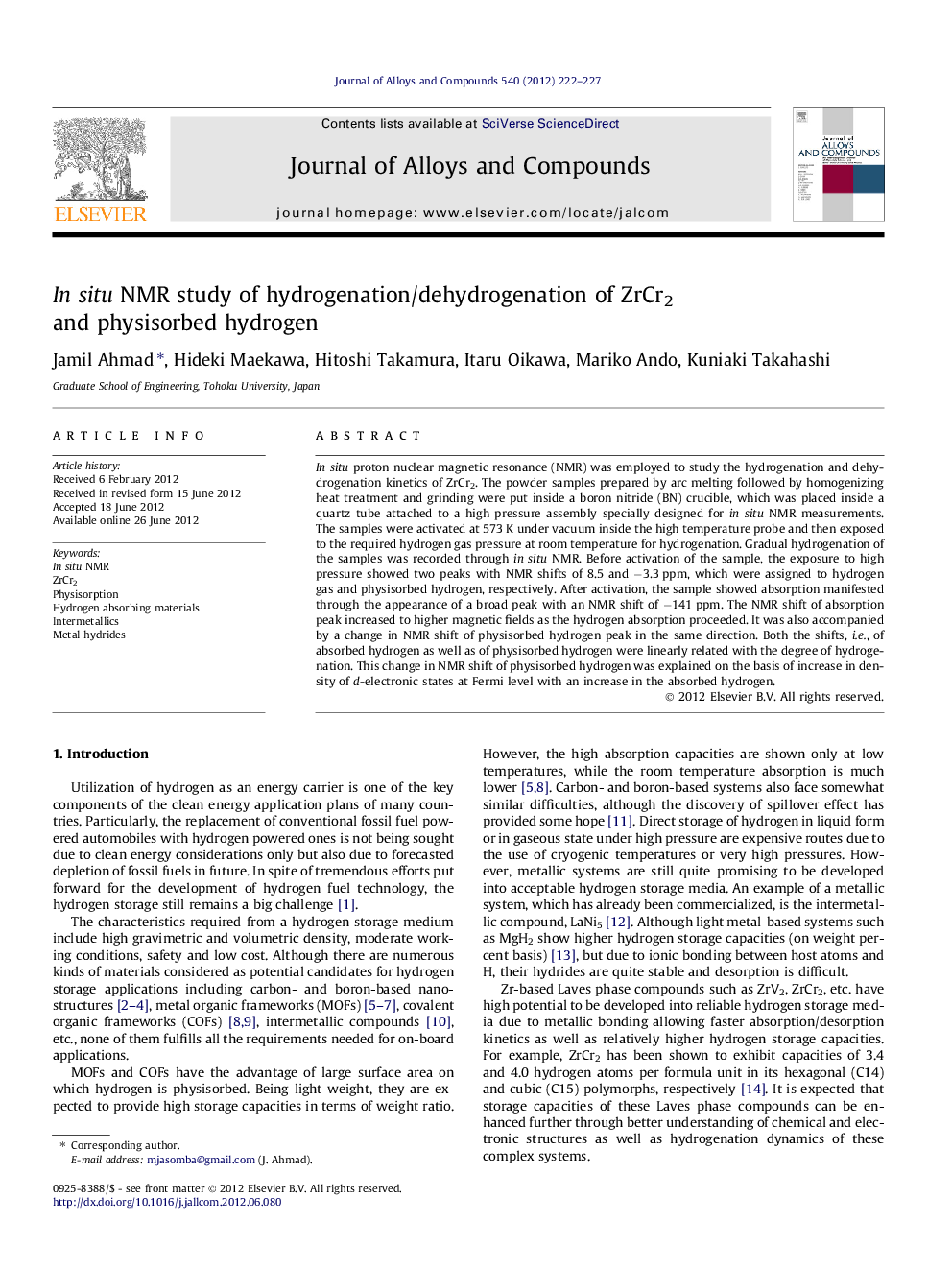| Article ID | Journal | Published Year | Pages | File Type |
|---|---|---|---|---|
| 1615534 | Journal of Alloys and Compounds | 2012 | 6 Pages |
In situ proton nuclear magnetic resonance (NMR) was employed to study the hydrogenation and dehydrogenation kinetics of ZrCr2. The powder samples prepared by arc melting followed by homogenizing heat treatment and grinding were put inside a boron nitride (BN) crucible, which was placed inside a quartz tube attached to a high pressure assembly specially designed for in situ NMR measurements. The samples were activated at 573 K under vacuum inside the high temperature probe and then exposed to the required hydrogen gas pressure at room temperature for hydrogenation. Gradual hydrogenation of the samples was recorded through in situ NMR. Before activation of the sample, the exposure to high pressure showed two peaks with NMR shifts of 8.5 and −3.3 ppm, which were assigned to hydrogen gas and physisorbed hydrogen, respectively. After activation, the sample showed absorption manifested through the appearance of a broad peak with an NMR shift of −141 ppm. The NMR shift of absorption peak increased to higher magnetic fields as the hydrogen absorption proceeded. It was also accompanied by a change in NMR shift of physisorbed hydrogen peak in the same direction. Both the shifts, i.e., of absorbed hydrogen as well as of physisorbed hydrogen were linearly related with the degree of hydrogenation. This change in NMR shift of physisorbed hydrogen was explained on the basis of increase in density of d-electronic states at Fermi level with an increase in the absorbed hydrogen.
► In situ NMR study of hydrogenation of C14-ZrCr2. ► Observation of physisorbed hydrogen peak in NMR spectra. ► Change of chemical shift of physisorbed H2 (δphy) with degree of hydrogenation. ► Linearity between δphy and degree of hydrogenation. ► Linearity between degree of hydrogenation and density of states, Nd(EF).
